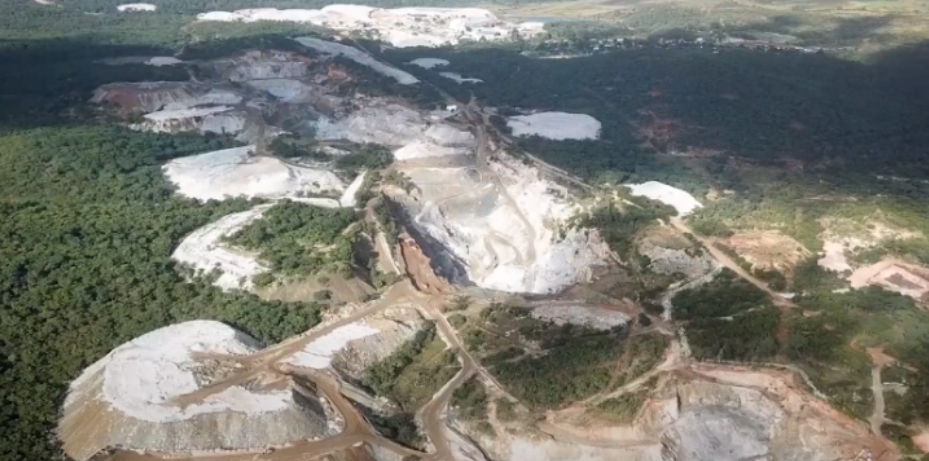A new study shows just how damaging major lithium mining operations can be. Tales of horrid working conditions and child labor have already crowded global headlines, along with stories highlighting the massive amounts of fossil fuels and equipment needed to acquire enough lithium to feed the ever-growing EV battery industry. Less obvious, however, have been the water pollution and depletion – not just in mining, but also in materials processing and, eventually, battery disposal.
A Study of Lithium and Water
A recent study titled “Lithium and water: Hydrosocial impacts across the life cycle of energy storage” surveyed the various types of lithium mining and technologies around the world, in addition to the subsequent processing, use, and disposal of lithium products, including batteries. Unsurprisingly, the authors discovered substantial depletion and contamination of water supplies, concluding that “researchers and advocates have expressed heightened concerns about the adverse social and ecological impacts of lithium, centered on debates over water.”
The chief and most blatant offender, according to the study, is traditional hard-rock lithium mining:
“Despite efforts to present lithium mining as a novel, climate-smart form of mining, at its most basic, open-pit lithium mining involves creating massive holes in the Earth that produce huge quantities of tailings and lasting impacts to waterscapes.”
Other forms of lithium production involve surface brine waters, or brine pumped from fragile underground aquifers, for evaporation. Direct Lithium Extraction (DLE) technologies all rely on water. The study notes that the “International Energy Agency estimates that lithium demand may grow tenfold by 2050 due primarily to rapid deployment of EVs.”
“Maladaptations” of Renewables Manufacturing
The Intergovernmental Panel on Climate Change has expressed concern about what it terms “maladaptation” – unintended, environmentally detrimental consequences of climate change mitigation technologies. Such analysis is warranted for solar panel production dependent on coal mining and other extractive industries. It examines the externalized environmental costs of renewables manufacturing beyond merely the net greenhouse gas emissions impacts of the so-called ‘renewable’ product once it leaves the assembly line.
Behind the assembly lines hide the mining, transportation, and processing of various raw materials and energy resources that impact the ecosystem in varying, often toxic, ways. One of these materials is lithium, whose multiple maladaptive impacts are chronicled in the study – water depletion and contamination in mining, processing, manufacturing, life use, and disposal or recycling. All of these stages impact the water supply negatively, which then impacts local human water resources (often in arid areas, including in the US), wildlife (especially fish and bird populations), crops, forests, and soil microbes.
Lithium mining in all forms requires fresh water, but so does processing:
“Lithium processing can result in freshwater ecotoxicity impacts and significant quantities of wastewater that need to be treated, reinjected, or disposed of some other way…. Processing wastewater may include heavy metals, other by-product minerals, silica, and solid wastes that require disposal at a materials recovery facility, landfill, or hazardous waste site.”
Yet more potable water is at risk when batteries are discarded, legally or illegally: Landfilled batteries can generate toxic leachate. Recycling may beneficially reclaim lithium and other materials for reuse, but once again, water is essential. The study notes: “There are several processes for recycling lithium batteries, including direct, pyrometallurgical, hydrometallurgical, or bio-hydrometallurgical methods, all of which involve water.” And it is not just water that is threatened by lithium mining: Threats to US national security from Chinese control of lithium resources raise the specter of foreign control of key US industries.
Environmental Justice for ‘Renewables’?
Surveying mining communities in the US and abroad, the study addressed the double-whammy impact of lithium mining on disadvantaged populations in arid regions. The inequitable impacts of this aspect of climate policy are discussed in detail throughout the lithium study: “By analyzing ‘hydrosocial’ dynamics across the life cycle of lithium, this primer offers a broad overview of the impacts, benefits, and burdens of ‘green extractivism’ on water and society.” The federal government has recently targeted farmers and consumers for water cleanup, but is subsidizing rampant water pollution to ramp up battery production.
Consumers already balking at EVs over cost and performance may pause further in eco-confusion over the cost-benefit assessment of EV carbon savings versus toxic, non-carbon by-products that kill the soil and wildlife. To minimize lithium’s mining impact, the study’s authors cite research that supports “reducing the amount of the mineral needed by prioritizing public transportation and producing smaller EVs.” Current EV subsidies extend to what are presumably ‘larger’ EVs.
As other harmful “maladaptations” attributable to renewables manufacturing become apparent, studies will advocate for ever smaller EVs. For instance, cobalt is a vital component of EV battery manufacturing. Global demand has spiked cobalt mining operations both legal and illegal, 70% of the world’s production being centered in the Democratic Republic of the Congo. Illegal mining and toxic dumping there have poisoned fish and soils, polluting crops and water resources. Cobalt mining also threatens Congo’s magnificent Basin Forest, the world’s second-largest pristine rain forest and a vital carbon sink.
Until federal and state subsidies for ‘carbon-neutral’ EVs account for lithium mining and other toxic pollution far from neutral in impacts on water and soil, the planet will continue despoiled (tenfold by 2050?) with known poisons in the crusade to regulate ubiquitous carbon. One day, “climate justice” will include “renewables justice,” and the impacts of renewables mining and manufacturing on marginalized communities and the environment will be assessed by “climate science” and computer models that contemplate something more than simply carbon dioxide emissions from tailpipes.
GraniteGrok.com is a reader-supported endeavor, and we can’t continue without your support. Please consider a monthly subscription donation. It goes a long way to helping offset the rising cost of everything. One-time donations are also always welcome. If you would like to donate by check, email me at steve@granitegrok.com.
